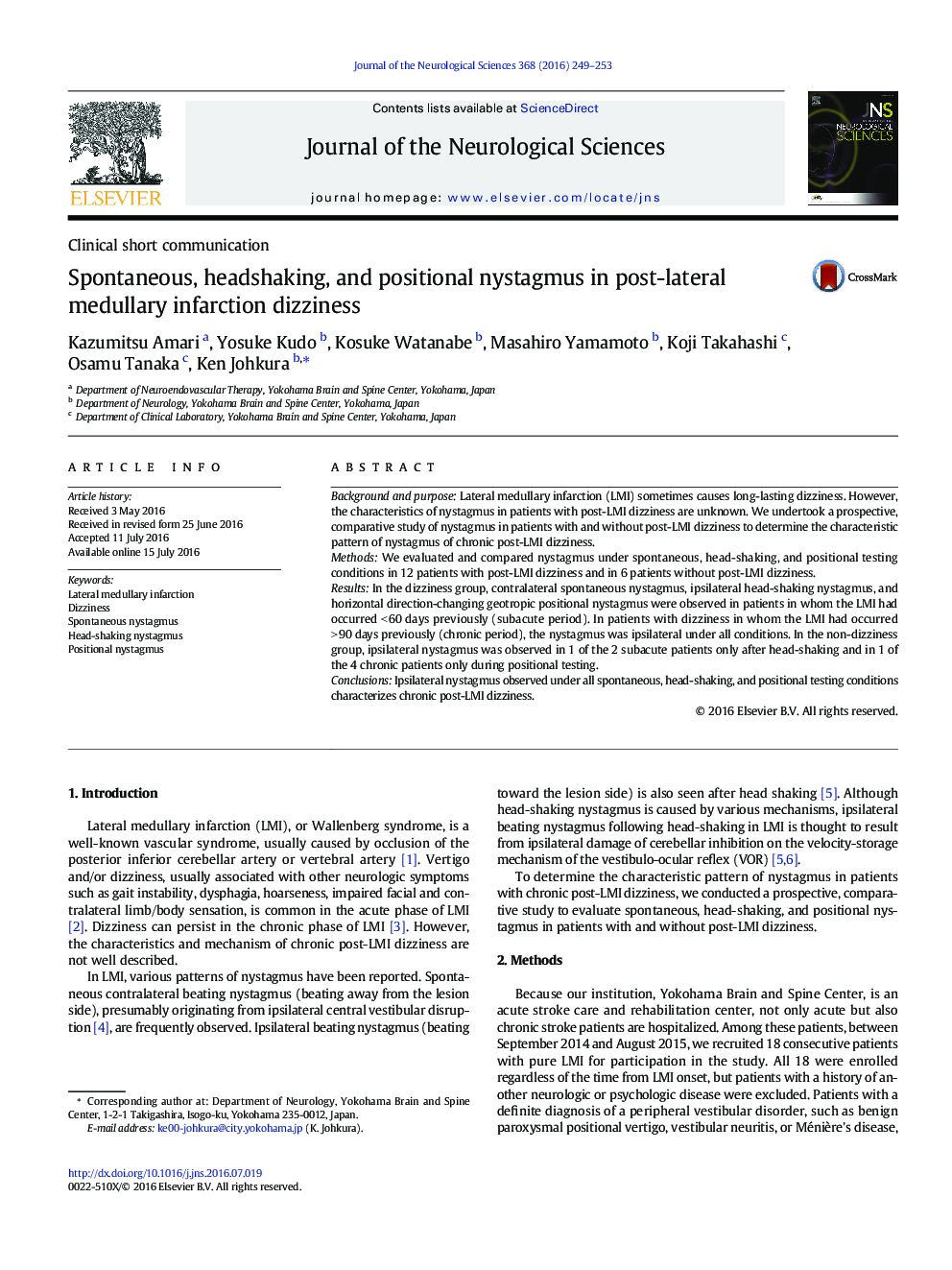| Article ID | Journal | Published Year | Pages | File Type |
|---|---|---|---|---|
| 1913004 | Journal of the Neurological Sciences | 2016 | 5 Pages |
•Dizziness is often associated with lateral medullary infarction (LMI).•The characteristics of nystagmus in patients with post-LMI dizziness are unknown.•We undertook a prospective, comparative study of nystagmus in LMI patients.•We found the specific pattern of nystagmus only seen in patients with dizziness.•This pattern of nystagmus is the solely characteristic of post-LMI dizziness.
Background and purposeLateral medullary infarction (LMI) sometimes causes long-lasting dizziness. However, the characteristics of nystagmus in patients with post-LMI dizziness are unknown. We undertook a prospective, comparative study of nystagmus in patients with and without post-LMI dizziness to determine the characteristic pattern of nystagmus of chronic post-LMI dizziness.MethodsWe evaluated and compared nystagmus under spontaneous, head-shaking, and positional testing conditions in 12 patients with post-LMI dizziness and in 6 patients without post-LMI dizziness.ResultsIn the dizziness group, contralateral spontaneous nystagmus, ipsilateral head-shaking nystagmus, and horizontal direction-changing geotropic positional nystagmus were observed in patients in whom the LMI had occurred < 60 days previously (subacute period). In patients with dizziness in whom the LMI had occurred > 90 days previously (chronic period), the nystagmus was ipsilateral under all conditions. In the non-dizziness group, ipsilateral nystagmus was observed in 1 of the 2 subacute patients only after head-shaking and in 1 of the 4 chronic patients only during positional testing.ConclusionsIpsilateral nystagmus observed under all spontaneous, head-shaking, and positional testing conditions characterizes chronic post-LMI dizziness.
